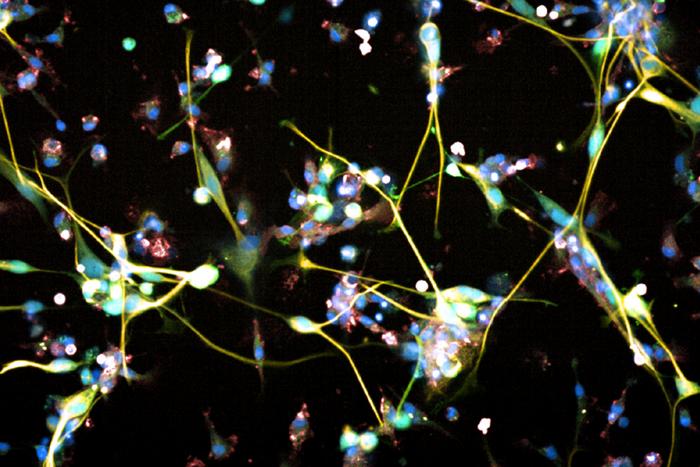Summary: Researchers at ETH Zurich have discovered that vortioxetine, an FDA-approved antidepressant, effectively combats glioblastoma cells in laboratory tests, offering a potential new treatment avenue for this aggressive and currently incurable brain cancer.
Estimated reading time: 6 minutes
An antidepressant may hold the key to fighting one of the deadliest forms of brain cancer. Researchers at ETH Zurich have found that vortioxetine, a drug used to treat depression, shows remarkable effectiveness against glioblastoma cells in laboratory tests.
Glioblastoma is an aggressive brain tumor with a grim prognosis. Half of all patients diagnosed with this cancer die within 12 months, despite current treatments including surgery, radiation, and chemotherapy. The discovery of vortioxetine’s potential anti-cancer properties offers a glimmer of hope in a field where progress has been painfully slow.
A Needle in a Pharmaceutical Haystack
Finding effective drugs for brain tumors is challenging. Many cancer-fighting compounds can’t cross the blood-brain barrier, severely limiting treatment options. This led researchers to look at drugs already known to reach the brain.
The ETH Zurich team, led by Professor Berend Snijder, used a novel screening method called pharmacoscopy to test hundreds of neuroactive substances on living glioblastoma cells. They focused on drugs that could cross the blood-brain barrier, including antidepressants, Parkinson’s medications, and antipsychotics.
In total, the research team tested up to 130 different agents on tumor tissue from 40 patients. Vortioxetine emerged as the most promising candidate. This inexpensive, widely available antidepressant proved highly effective against glioblastoma cells in the laboratory.
From Lab to Clinic: The Road Ahead
The results are encouraging, but the researchers urge caution. Snijder warns, “So far, it’s only been proven effective in cell cultures and in mice.”
Clinical trials are the crucial next step. The research team is preparing two trials:
- Testing vortioxetine alongside standard glioblastoma treatments.
- Using the pharmacoscopy platform to create personalized drug combinations for individual patients.
Michael Weller, Professor at the University Hospital Zurich and study co-author, sees potential in vortioxetine’s rapid path to clinical use. “As the drug has already been approved, it doesn’t have to undergo a complex approval procedure and could soon supplement the standard therapy for this deadly brain tumour,” he said.
Hope Tempered with Caution
While the findings are exciting, both Weller and Snijder strongly caution against self-medication. Weller emphasized, “We don’t yet know whether the drug works in humans and what dose is required to combat the tumour, which is why clinical trials are necessary. Self-medicating would be an incalculable risk.”
If vortioxetine proves effective in human trials, it would mark a significant breakthrough. Snijder notes, “Should vortioxetine prove effective, this will be the first time in recent decades that an active substance has been found to improve the treatment of glioblastoma.”
The Power of Repurposing
This research highlights the potential of drug repurposing – finding new uses for existing medications. The approach can significantly speed up the drug development process, as safety data and manufacturing methods already exist.
The study also showcases the power of advanced screening techniques. The pharmacoscopy platform allowed researchers to rapidly test a large number of compounds on actual tumor tissue, increasing the chances of finding an effective treatment.
As clinical trials begin, the medical community watches with cautious optimism. For patients facing a glioblastoma diagnosis, this research offers a ray of hope in the ongoing battle against one of medicine’s most formidable foes.
Quiz
- What is the name of the antidepressant found to be effective against glioblastoma cells?
- Why is finding drugs for brain tumors particularly challenging?
- How many different agents did the research team test on tumor tissue?
Answer Key:
- Vortioxetine
- Many cancer drugs cannot cross the blood-brain barrier
- Up to 130 different agents
Further Reading:
- Glioblastoma: Overview and Current Treatment Options
- The Blood-Brain Barrier in Cancer Therapy
- Drug Repurposing in Oncology
Glossary of Terms:
- Glioblastoma: An aggressive type of brain cancer that forms from glial cells.
- Blood-brain barrier: A semipermeable border that prevents many substances from entering the brain.
- Pharmacoscopy: A screening method that tests multiple drugs simultaneously on living cancer cells.
- Vortioxetine: An antidepressant drug that has shown promise against glioblastoma in lab tests.
- Drug repurposing: The process of finding new uses for existing approved medications.
- Clinical trial: A research study that tests a medical intervention on human subjects.
Enjoy this story? Get our newsletter! https://scienceblog.substack.com/


